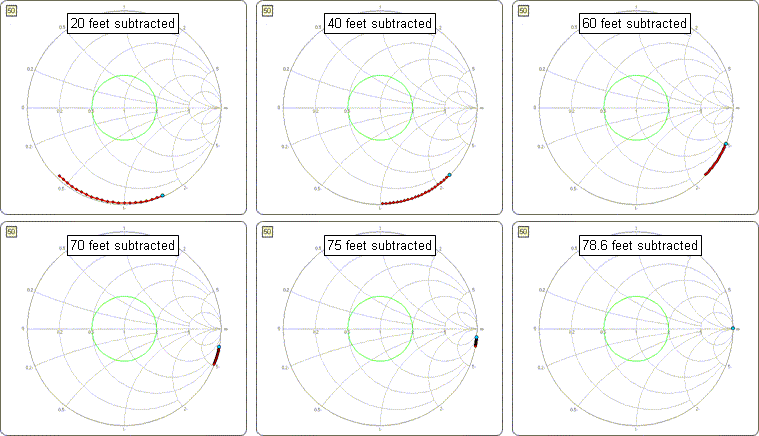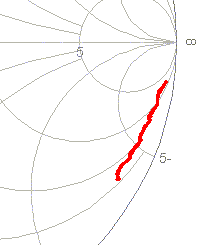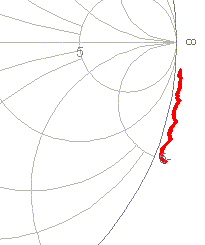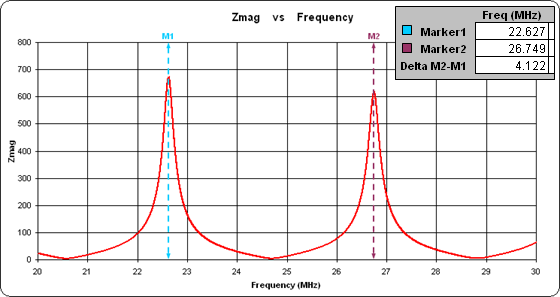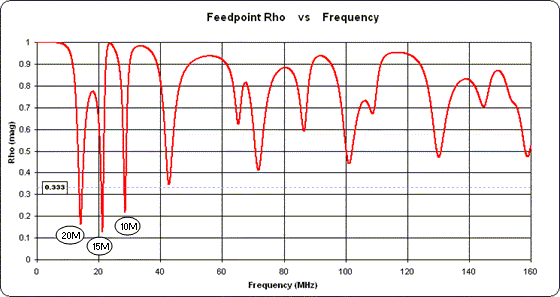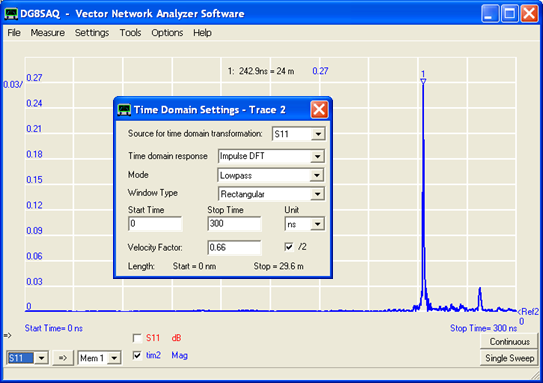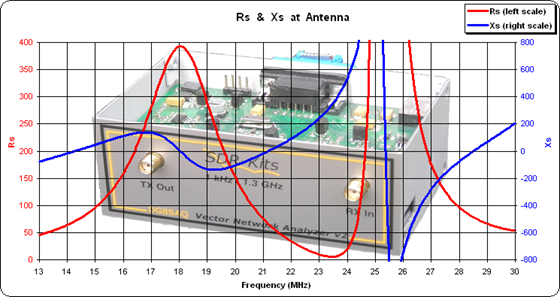A very common scenario is the need to make accurate antenna measurements with the antenna system in its operating position, perhaps atop a tower, while the measuring equipment is on the ground. In this situation there is a trade-off between convenience and accuracy. The following techniques may be employed, listed in the order of most accurate to least accurate.
- The most accurate way to make antenna measurements is to temporarily disconnect the far end of the transmission line from the antenna, place OSL (Open-Short-Load) terminations at the far end, connect the shack end of the line to your instrument, and perform a calibration. This will move the reference plane of your instrument to the antenna feedpoint, effectively "calibrating out" the transmission line. Then reconnect the feedline to the antenna and make measurements over the frequency range of interest. Readings you make at the shack end of the line will then be the same as if you had made them directly at the antenna.
- The next most accurate technique is to mathematically "subtract out" the effect of the feedline. Note this isn't quite the same as "calibrating out" the feedline since you are using a model of the feedline rather than an actual set of measured responses.
Perhaps you have a section of the same line that was left over from your antenna installation. If so, you can use the Zplots "Measure Transmission Line Parameters" feature (described on the main Zplots web page) to determine the electrical characteristics of the line: nominal Zo, nominal VF, and loss coefficients K0/K1/K2. Then the only additional piece of information needed is the physical length of the actual antenna feedline.
If you can terminate the line with either a short or open (one or the other), you can determine the length by using either a) the "unwrap Smith chart" technique (most accurate) or b) the "quarter-wave or half-wave points" technique (less accurate). Both of these methods are described in more detail below. To provide an open circuit termination you can just unscrew the feedline connector at the antenna. If the connector is wrapped in several layers of
Coax-Seal, or if the feedline is directly attached to the antenna such as with coax pigtails soldered to either side of a dipole, just place a jumper across the antenna feedpoint to provide a short circuit termination. Make the jumper as short as possible.With the electrical characteristics and the physical length in hand, reconnect the far end of the line to the antenna (or remove the jumper) and run a sweep over the frequency range of interest. Load the sweep data into Zplots and then use the "Subtract Transmission Line" feature (described on the main Zplots web page) to "subtract out" the effect of the feedline.
- If you can't measure the electrical characteristics for an identical section of line you can use an estimate of the characteristics. Zplots contains built-in characteristics for approximately 100 different line types. At least one of them is probably very close (although not exactly the same) as your feedline. Then, as above, determine the physical length of the actual line and "subtract" it out from measured data.
- Finally, suppose you have the electrical characteristics, either measured or estimated, but you can't access the far end of the line. How can you determine the length of the line without being able to put a short or open at the far end? One technique involves Time Domain Reflectometry (TDR), described below.
So it all boils down to how much accuracy you want versus how many different ways (if any) you can terminate the far end of the line. If you can place OSL terminations at the far end just calibrate out the line. That will take full advantage of the error correction algorithms that are part of your instrument's control software. If you can only place an open or short you can determine the length using one of the techniques described below and then use the Zplots "Subtract Transmission Line" feature with electrical characteristics that are either actual (via measurements of a piece of identical line) or estimated (via one of the built-in line types). And if you have no access to the far end of the line you can use TDR techniques to determine the length, although probably not with as much accuracy as with an open or short termination.
Line Length via "Unwrap" Smith Chart:
Here's an example of using Zplots to determine the length of a transmission line. In this case an unknown length (estimated to be between 50 and 100 feet) of BeldenRG-213 was terminated with an open circuit. A frequency sweep from 1 to 2 MHz with a 0.05 MHz step size was made and the data file was loaded into Zplots.
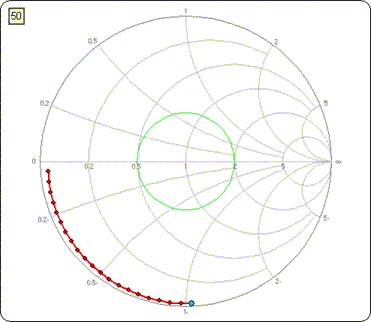
This is what the Smith chart would look like. The "Dots On/Off" button was used to put a red dot at each discrete frequency of the sweep. In addition, a marker (blue dot) was placed on the 1 MHz point.
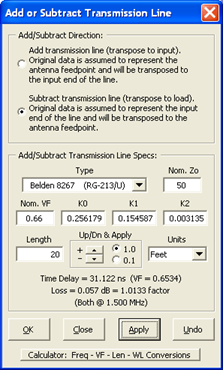
Click the "Add/Subt T Line" button. Choose the "Subtract ..." direction and set the line type to Belden
RG-213 . The estimated line length is somewhere between 50 and 100 feet so to start set the length to 20 feet and click the "Apply" button. Follow that with lengths of 40 feet and 60 feet.Once the blue dot gets close to the "open circuit" position on the Smith chart (right-hand side, 3:00 o'clock on the outer circle) switch to the "Up/Dn & Apply" spin buttons, first using increments of 1 foot and then increments of 0.1 feet. Alternatively, change from feet to inches; the length value will be automatically converted as necessary.
Continue to increment the "subtracted" length until the blue dot and all the other dots are right at 3:00 o'clock. You know that the line was terminated with an open circuit. You have now "subtracted" (mathematically removed) enough transmission such that the Smith chart appears to be an open circuit, even though the measurements were made with a length of line in place. Hence the length that you mathematically subtracted is the actual length of the line.
In this example the final length was set at 78.6 feet. The following "time lapse" shows what the Smith chart would look like with varying amounts of transmission line subtracted.
